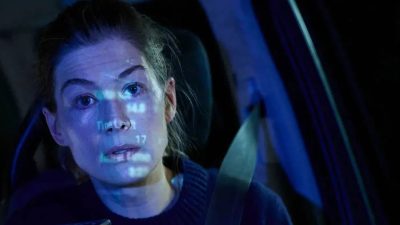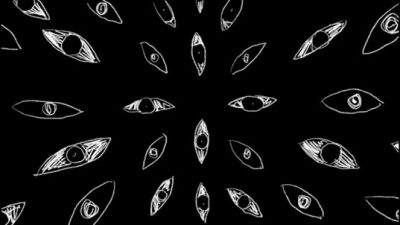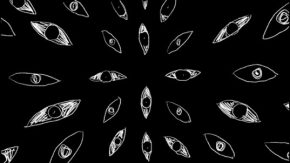What would you do if every part of your life began to crumble, and just as you tried to get one piece together, another fell apart? A bit too relatable, too often, right? This is exactly the despair Matthias Glasner (Der freie Wille) explores in Dying, a 2024 German film that delivers gut-wrenching drama, subtle humor, and deeply personal reflections. Birth and death intertwined in everything, everyone, at every moment. Having won the Silver Bear for Best Director, Glasner brings his most intimate work to date with this project, crafting a tale that is as humorous as it is tragic, a journey through the complications of life, love, and loss.
At the heart of Dying is Tom Lunies, a talented composer who at first sight, appears to have everything under control. But lurking beneath the surface is a life bound by tragedy and suffering. The story introduces us to Tom’s father, battling dementia and deteriorating rapidly—a situation that is pushing Tom’s mother to her limits, a woman whose health is also in freefall, with cancer, and diabetes. Not to mention, his sister Ellen has spiraled into self-destruction, with alcohol-fueled nights and empty encounters, leaving her lost and often waking up in foreign countries with strangers.
It is an understatement to say that the Lunies family has issues, but Dying doesn’t just rely on typical plot devices; it bravely tackles universal, often unspoken struggles, and that makes it all the more relatable. Glasner’s careful touch and deep empathy for his characters bring a sense of connection to their pain. You cannot turn a blind eye to the isolation of elderly people – like today’s Western hemisphere usually does – Glasner makes you watch. Watch for minutes straight, without any relief.
The film’s structure is divided into five chapters followed by an epilogue. This segmented storytelling allows the film to dive into different aspects of the Lunies’ struggle, starting with Tom’s parents and then gradually shifting focus onto Tom’s and Ellen’s personal issues. Lars Eidinger’s portrayal of Tom is particularly compelling. Eidinger, known for his roles in both Hollywood and European cinema, embodies the confusion and detachment of a man who seems to be watching his life from the outside.

Source: Cineuropa
In one of the most memorable sequences, we follow Tom’s awkward attempts at fatherhood as he tries to claim a paternal role over his ex-girlfriend’s child, a baby fathered by another man. It’s a strange, messy entanglement, yet strangely relatable in its sheer absurdity. “The baby is half mine…four part…eight part…” he mumbles with a subtle laughter slipping out of his mouth.
Glasner brings a rare and welcome humor to the heaviness of Dying. In another instance, Tom’s mother—already limping and barely able to see—insists on driving the car with Tom’s dementia-stricken father navigating – “Truck parking on the right side.” Glasner pulls the viewer into tense, absurd moments that are laugh-out-loud funny despite its tragic undertones. It is like watching life itself: tragic, ridiculous, and painfully real.
There is also an artistic subtext running through Dying as Tom and Bernard, our struggling artist duo, fight their own inner battles. The film subtly hints at Glasner’s personal struggle to find the balance between art and accessibility, beauty and truth, complexity and simplicity, “consumability” and “high art”. It’s a universal question for any artist, as Glasner openly reflects on what makes art “real” or “relatable” in today’s world. As Tom works with his friend Bernard, who is dealing with suicidal thoughts, we witness heavy dilemmas first hand.
Every member of the Lunies family is struggling, and that struggle often takes the form of miscommunication and inherited trauma. There is a striking scene after Tom’s father’s strange and depressing funeral in the woods, where Tom sits down with his mother to talk. It is a raw conversation, one that reveals years of unspoken anger, unloved feelings and generational imprints. The long, heavy silence finally broken is what gives much emotional weight to Dying, it is a powerful scene that lingers with viewers long after the credits roll.
And the film does not just stop at the family’s conflicts, though. It digs into themes like alcoholism, drifting, and the complexity of relationships. Ellen’s turbulent, substance and illusion based romance epitomizes this chaos, a connection that is nothing more than a carousel of night-long parties and quick fixes until the involved parties have to face themselves and each other sober, raw and real. Nothing can be swept under the carpet for too long, at least not without consequences.

Source: IMDB
Glasner’s unflinching realism is marvelous. His work belongs to the kind of cinema that is dynamic, vivid and pulses with life. Glasner keeps a tight pace, making the nearly three-hour runtime feel almost too short. His vision for the film is rooted in a vivacious style that moves between light-heartedness and dark introspection seamlessly, maintaining a rhythm that keeps the viewer engaged throughout.
Music also plays a crucial role, with old blues and country songs sung by Ellen lending a surreal touch to the film’s emotional landscapes. Lorenz Dangel’s original orchestration for Bernard’s music adds another layer of depth – and occasionally a “bit of a cheese to the cake”.
In essence, Dying is a testament to the messiness of life. It’s about finding humor amid heartbreak, choosing love even in the face of loss, and realizing that dysfunction, for better or worse, is part of the family – and of the collective – experience. Glasner doesn’t provide answers—he simply lets us watch, feel, and maybe, if we choose, come out of life’s darker experiences as a notch more empathetic and humane.
Dying is now in cinemas.
~ by Dora Endre ~

























Comments